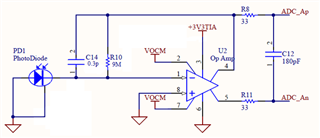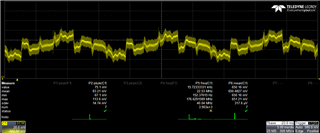Other Parts Discussed in Thread: LAUNCHXL-F28379D, C2000WARE
Hi,
I designed a PCB board using the TMS320F28377D and I am using the built-in ADC with a differential input to have a 16-bit result. Currently, my circuit seems to work fine when I check my signals on the oscilloscope, but once I connect to the ADC inputs, the results (from the ADC) shows the signal as very noisy.
I decided to test the (16-bit) ADC using the LaunchXL-F28379D, and I notice the same thing happening. I applied a DC voltage to the ADC, and the ADC read the signal, but with +-50mV fluctuations. Where is this noise coming from, and how do I fix this?
Thank you.



